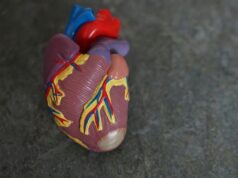
An animal study from China has indicated that it is feasible to implant two leadless pacemakers in the right ventricle of the same heart without impacting cardiac function at six months.
The study recently published online in Europace; however, does not provide long-term information regarding cardiac function and adverse events.
The majority of pacemaker patients need at least two devices in their lifetime, following this rationale and due to concerns that multiple transcatheter pacing devices in the heart may compromise heart function, Keping Chen (State Key Laboratory of Cardiovascular Disease, Arrhythmia Center, Fuwai Hospital, National Center for Cardiovascular Diseases, Chinese Academy of Medical Sciences and Peking Union Medical College, Beijing, China) and others, sought to investigate in a swine model whether two transcatheter pacemakers sequentially implanted in the right ventricle impacted cardiac function.
Fourteen mini pigs (44–55kg) underwent implantation procedures. Each pig received two sequential leadless pacemakers (Micra, Medtronic) in the right ventricle with one month between two separate implantations and were then followed for six months. A necropsy was performed at the end of the study to measure the length of the fibrous tissue covering the devices and assess tricuspid valve integrity.
The researchers reported that five animals died prior to the end of the six-month follow-up. Four deaths were caused by procedure-related issues including: one acute device dislodgement, two atrial ruptures by the introducer and one massive air embolism at the time of the second implantation. The other death was due to chronic infection 139 days after the second device implantation.
In the remaining nine pigs, Chen et al found, there were no significant changes in left ventricular ejection fraction, aortic time integral, cardiac output, and left ventricular size from baseline to the end of the study. The researchers note that the size of the hearts of these pigs was significantly smaller than the typical human heart (left ventricular end-diastolic volume in adult humans ranges from 58 to 120mL compared with 40 and 50mL for the pigs); therefore, “the impact of the devices in the hearts of these pigs is likely stronger than what would be seen in humans.
The fact that no difference in cardiac function was found in these smaller animals indicates that there is even less chance of an impact of multiple devices in the larger human hearts,” Chen et al write.
The mean length of fibrous tissue covering the Micra device was 14.3±7.8mm and there were no observations of tricuspid valve injury in any of the nine animals. The authors highlight that “the impact of fibrous attachment around the Micra device on cardiac contraction may be minimal.” However, they note: “While it is possible to retrieve a transcatheter pacemaker before it is encapsulated, it is likely attempting to extract a completely encapsulated device would create additional risk to the patient. Because of this uncertainty around transcatheter pacemaker extraction, it seems prudent to leave the first transcatheter pacemaker and implant a second device next to it.”
The researchers acknowledge that the follow-up period of six-months is limited when compared with the device longevity of 10 years at which the second implantation is required and conclude that “Considering the uncertainty of the tool for extraction of Micra devices in the future, it is possible to implant two or more than two Micra devices in the same ventricle once the end of life of the first Micra device approaches in clinical practice.”









